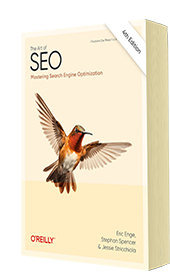How To Write For Search Engines
Step 1 – Think like a search engine
In order to start writing for maximum search engine visibility, you need to start thinking like a search engine.
The engines look at the HTML code on the page and parse the textual copy on the page, eliminating HTML filler code used for layout. The textual copy goes into the search engine’s “index” – a very large database. When a search engine user conducts a search on the search engine, the search engine identifies all of the pages in this vast database that include those words on the page and/or those words in the link text pointing to that page. So, a page that does not include the words that the user has searched for is unlikely to rank. As is a page with backlinks that do not include the searcher’s words in the link text.
Search engines order the search results by relevance. The search engine may “think” your page is more relevant based on dozens and dozens of criteria. One of these criteria is keyword prominence (how high up in the page your keywords appear).
Once you start thinking like a search engine as you are writing, you will realize when you are being too verbose in the first few paragraphs. And it will occur to you as you are writing that the title tag for your page doesn’t have the most important keywords mentioned at the beginning but instead at the end.
Don’t go overboard with high “keyword density.” Too many occurrences of your keyword will trip the spam penalty algorithm.
If you are going after a keyword phrase, your web page will appear more relevant if the individual words in that phrase appear together.
Step 2 – Pin down the keywords you are going for on this page
As discussed in the four steps for Optimizing your Content for Search Engines, you need to keep the keyword focus around no more than several keyword phrases.
Make sure your most important keywords are placed near the front of your title tag and and in the first paragraph or two of body copy. And further emphasizing your keyword through an H1 heading tag won’t hurt either!
Think through how you can best incorporate your targeted keywords towards the front of your title tag, H1 tag, and body copy, and yet simultaneously write something interesting, compelling, information-rich and value added.
Then start writing. Write at least 250 words of copy. Pay attention to the link text that you use within the copy, avoiding such phrases as ‘click here’ or ‘more information’ as link text and instead using good keywords that are relevant to the page that you are linking to.
Step 3 – Test the Waters
Presumably you now have a well-written, interesting and useful page with your most important targeted keywords in the right places.
Don’t just assume you got it right though, especially when you are new to this.
Run your copy past a human being or two and see what they think about it. If they think it sounds artificial or is uninteresting to them, then you will need to start again.
If they like it, then great: it is time to run the draft page through a spider simulator such as the one at searchengineworld.com. Such a tool will tell you how many times you used each keyword. It will pull the text out of all the various places in the HTML, such as ‘alt’ tags. You may find from using such a tool that another keyword comes through more strongly than you had intended and the more important keyword is dwarfed in comparison. Don’t worry. You don’t have to keep using a tool like this every time you write anything down. With a little practice, you will just have a good gut feel for what will rank well.
The final test, of course, is linking this page in to the rest of your site and seeing how it performs, and where it ranks in the search results for the targeted keyword. If it doesn’t do so well, feel free to experiment by adding and subtracting content, shuffling words around and so forth. Pay particular attention to your title tag since that little bit of text is given the most weight by the search engines out of anything on your page.
Don’t worry much about ‘alt’ tags. That is the text that appears when you mouse-over an image. Alt text may be mildly helpful but only really for images that are also links.
Write a meta description that summarizes what the page is about in a compelling way that makes people want to click from the search results to your page when they read it. Make sure the meta description includes your targeted keywords for that page. Be brief. A couple of sentences are plenty. Don’t worry about writing a meta keywords tag because that is all but ignored by major search engines. Since it won’t help your rankings, put your time into something more useful.

Chapter 6:
Keyword Research
From the fundamentals of link building to the nuances of natural linking patterns, virality, and authority.
Related Posts

Embrace Journaling, Tackle Tardiness, and Explore Our Energetic Echo
Here’s what I found inspirational, challenging, or just downright hilarious this week. What caught your eye? And, remember to check out this week’s great podcast episodes: Scaling a SaaS Company with Jason Morehouse “A crucial factor to business success is to find and take the personal path that works best for you.” — Jason Morehouse […]
Read More
Harrison’s harmony, conquering a blank canvas, & gut health hacks
Here’s what I found inspirational, challenging, or just downright hilarious this week. What caught your eye? And, remember to check out this week’s great podcast episodes: Be a Sales Game Changer with Fred Diamond “True elite sales professionals develop a dedicated mindset, proactive client interaction, and continuous self-preparation. They understand their client’s needs and enable […]
Read More
Rebirth of sleeper trains, 4,000 weeks is a long/short time, and golden age for medicine
Here’s what I found inspirational, challenging, or just downright hilarious this week. What caught your eye? And, remember to check out this week’s great podcast episodes: A Story Worth Retelling with Luke Storey “Aligned values are the cornerstone of successful partnerships, whether in business or life, as they shape our moral code, define our priorities, […]
Read More
